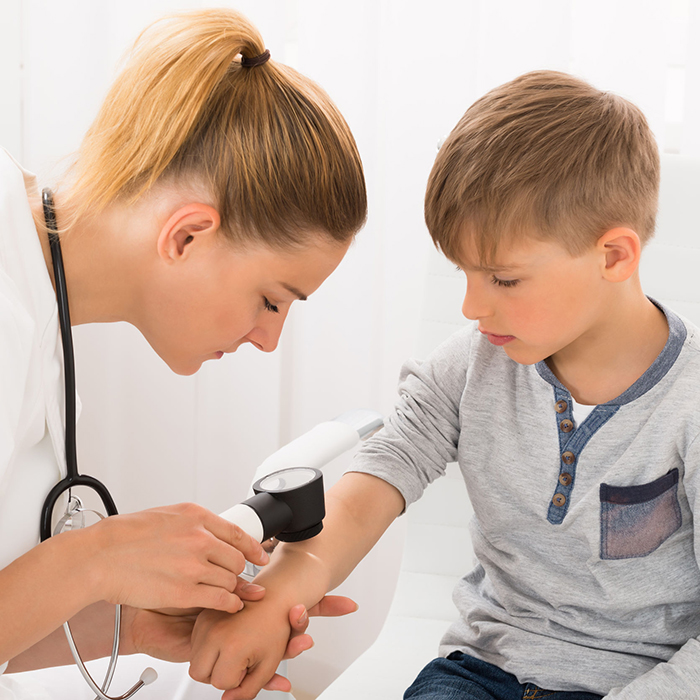Paediatric dermatology
Children often do not speak if there is something itchy on their arms and legs, so we can only rely on the visible symptoms when bathing, or if we notice that they are scratching a lot while playing.
Unpleasant skin symptoms can be caused by several things, which are always recommended to find out as soon as possible so that the skin problem can be remedied.

What are the most common childhood skin diseases?
At the paediatric dermatology clinic, our small patients most often have the following diseases:
Eczema (atopic dermatitis)
Eczema is a dry, red, itchy inflammation of the skin and occurs due to impaired immune function. The treatment of childhood eczema is of paramount importance, as this can significantly reduce any respiratory complaints that may develop later (asthma, hay fever, bronchitis) and significantly improve the child’s quality of life.
Viral warts
Lumps with a pierced, articulated surface and a dense feel are usually not painful, but it is always necessary to consult a dermatologist, because it can only be removed by a specialist.
Rashes
The cause of the rash can be a food allergy or even a virus, for the detection and effective treatment of which a dermatological examination is also essential.
Birthmarks
Regular check of birthmarks that are already present at birth is especially important to prevent the development of melanomas. The moles are examined with a dermatoscope so that the sides, colour and size of the moles become perfectly visible.
Acnes
This skin disease develops during adolescence and it first appears as a closed blackhead, usually on the face, which develops into purulent blisters and can even leave scars. However, with regular care, permanent skin blemishes can be successfully treated and prevented.
Hair loss
Hair loss in general or in patches can have a variety of causes, including fungal infections, bacterial nodules (such as tonsillitis), iron deficiency anaemia, or metabolic disorders.

What happens during a paediatric dermatological examination?
The paediatric dermatological examination begins with the recording of the small patient’s medical history. The dermatologist will interview both the parent and the child in detail about their perceived symptoms, primarily skin-related but also any other previous illnesses. The paediatric dermatologist then continues the examination by examining the altered skin surface. If necessary, with a magnifying glass or a special device with internal lighting and a magnifying glass, the so-called dermatoscope, the paediatric dermatologist also examines the formulas of the epithelium and skin.
If necessary, the paediatric dermatologist may order a blood test to make a diagnosis or refer the child to another specialist, such as an internist, to rule out the involvement of other organs, or to have surgery to remove the problematic skin lesions.
What treatment options are available at a paediatric dermatology clinic?
The following treatment options are available at the paediatric dermatology clinic:
- Melanoma screening
- Removal of benign dermatological lesions
- Removal of viral warts
- Treatment of fungal diseases
- Treatment of psoriasis
- Removal of skin lesions with minor aesthetic problems (lipoma, fibroma, atheroma, basal cell carcinoma, pigmentation disorder)
- Dermatological allergological treatments
